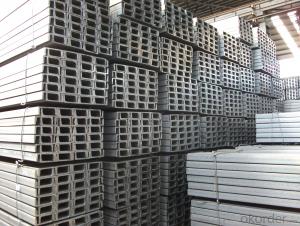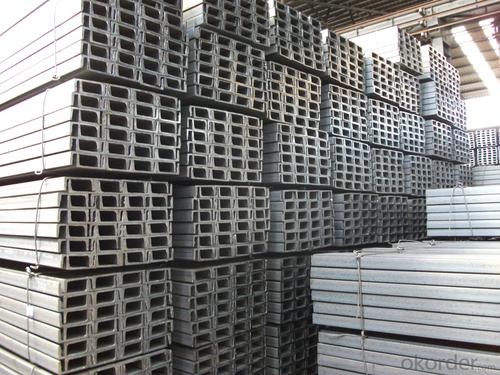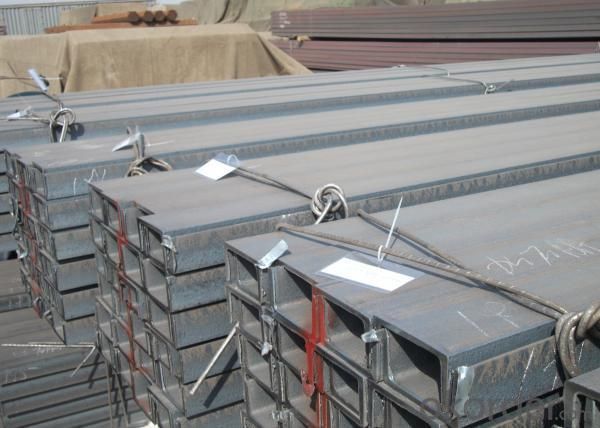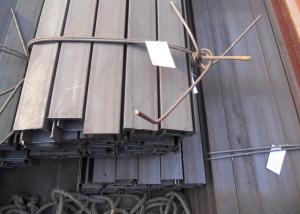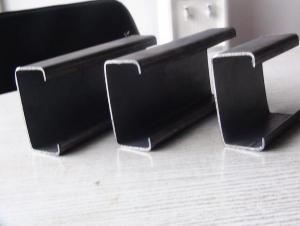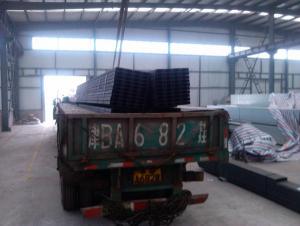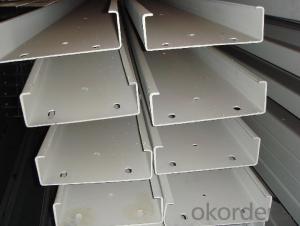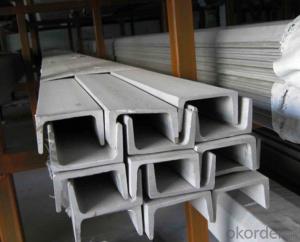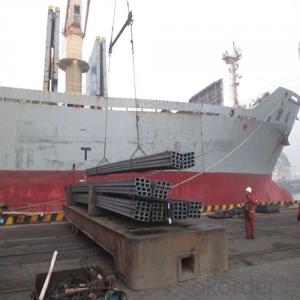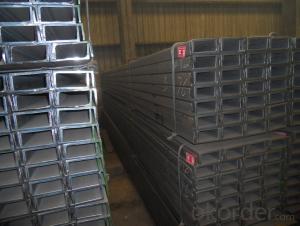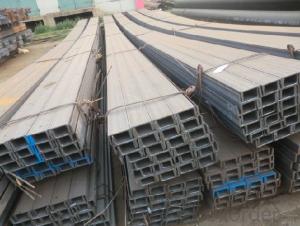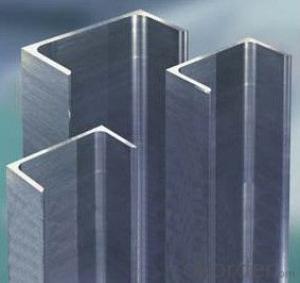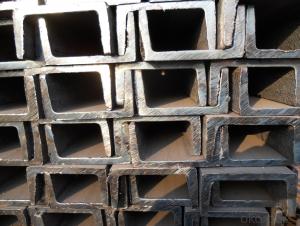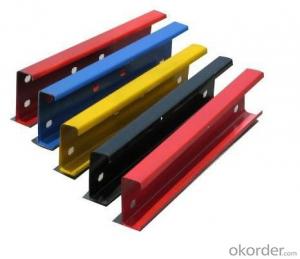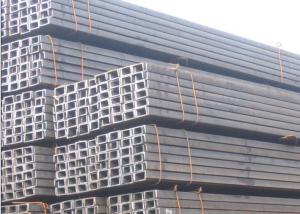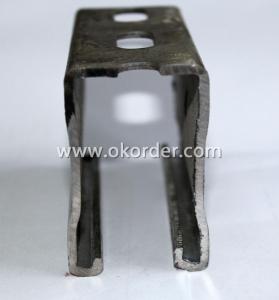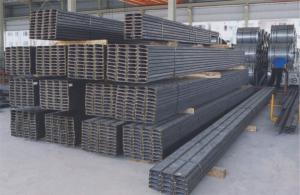Alloy Low Carbon Steel U Channel UPN EN Standard
- Loading Port:
- Tianjin
- Payment Terms:
- TT or LC
- Min Order Qty:
- 200 m.t.
- Supply Capability:
- 5000 m.t./month
OKorder Service Pledge
OKorder Financial Service
You Might Also Like
OKorder is offering Alloy Low Carbon Steel U Channel UPN at great prices with worldwide shipping. Our supplier is a world-class manufacturer of steel, with our products utilized the world over. OKorder annually supplies products to African, South American and Asian markets. We provide quotations within 24 hours of receiving an inquiry and guarantee competitive prices.
Product Applications:
Alloy Low Carbon Steel U Channel UPN are ideal for structural applications and are widely used in the construction of buildings and bridges, and the manufacturing, petrochemical, and transportation industries.
Product Advantages:
OKorder's Alloy Low Carbon Steel U Channel UPN are durable, strong, and wide variety of sizes.
Main Product Features:
· Premium quality
· Prompt delivery & seaworthy packing (30 days after receiving deposit)
· Can be recycled and reused
· Mill test certification
· Professional Service
· Competitive pricing
Product Specifications:
Manufacture: Hot rolled
Grade: Q195 – 235
Certificates: ISO, SGS, BV, CIQ
Length: 6m – 12m, as per customer request
Packaging: Export packing, nude packing, bundled
UPN U CHANNEL | Standard
h | Sectional
b | Dimension
s |
T | Mass:
Kg/m |
(mm) | (mm) | (mm) | (mm) | ||
80x45 | 80 | 45 | 6.0 | 8.0 | 8.64 |
100X50 | 100 | 50 | 6.0 | 8.5 | 10.6 |
120x55 | 120 | 55 | 7.0 | 9.0 | 13.4 |
140x60 | 140 | 50 | 7.0 | 10.0 | 16.0 |
160x65 | 160 | 65 | 7.5 | 10.0 | 18.8 |
180x70 | 180 | 70 | 8.0 | 11.0 | 22.0 |
FAQ:
Q1: Why buy Materials & Equipment from OKorder.com?
A1: All products offered byOKorder.com are carefully selected from China's most reliable manufacturing enterprises. Through its ISO certifications, OKorder.com adheres to the highest standards and a commitment to supply chain safety and customer satisfaction.
Q2: How do we guarantee the quality of our products?
A2: We have established an advanced quality management system which conducts strict quality tests at every step, from raw materials to the final product. At the same time, we provide extensive follow-up service assurances as required.
Q3: How soon can we receive the product after purchase?
A3: Within three days of placing an order, we will arrange production. The normal sizes with the normal grade can be produced within one month. The specific shipping date is dependent upon international and government factors, the delivery to international main port about 45-60days.
Images:
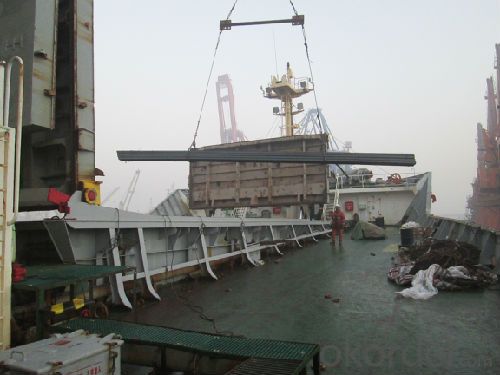
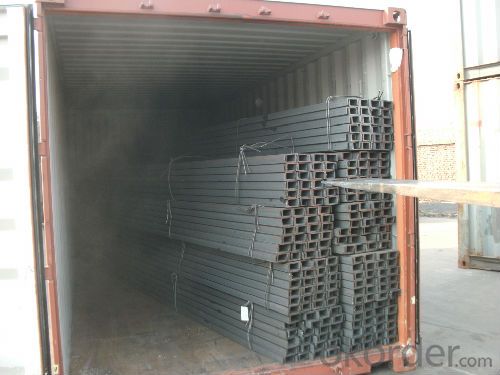
- Q: What are the different types of clamps used for steel channels?
- There are several different types of clamps used for steel channels, including beam clamps, channel clamps, strut clamps, pipe clamps, and C-clamps. Each type of clamp is designed to securely hold steel channels in place and provide support for various applications.
- Q: Can steel channels be used in railway infrastructure?
- Yes, steel channels can be used in railway infrastructure. Steel channels are commonly used in the construction of railway tracks and bridges. They provide structural support and stability to the railway infrastructure, ensuring the safe passage of trains. Steel channels are known for their high strength and durability, making them suitable for withstanding the heavy loads and constant stress experienced by railway infrastructure. Additionally, steel channels can be easily fabricated and installed, making them a preferred choice in railway construction projects.
- Q: How to install solid wood fence at the gate of the channel gate? Specifically, how to fix the solid wood column to the channel steel? (a gypsum board spread over a channel
- It is not clear how the column should have been fixed. The channel steel can be drilled and fixed by screws, and a steel plate can be welded on the channel so that the column can be installed
- Q: Can steel channels be used for supporting rooftop equipment?
- Yes, steel channels can be used for supporting rooftop equipment. Steel channels are strong and durable, making them suitable for bearing the weight of rooftop equipment such as HVAC units, solar panels, or communication antennas. They provide stability and support, ensuring that the equipment remains securely in place. Additionally, steel channels can be customized to fit specific dimensions and requirements, making them versatile for various rooftop equipment installations.
- Q: What are the common applications of steel channels?
- Steel channels are commonly used in various applications such as construction, manufacturing, and infrastructure projects. They are frequently utilized as structural components in building frames, support systems, and for reinforcing concrete structures. Steel channels also find application in the fabrication of machinery, vehicles, and equipment, where their high strength and durability are advantageous. Additionally, they are used in the electrical and telecommunications industries for cable management and support.
- Q: How are steel channels used in structural applications?
- Steel channels are widely used in structural applications due to their excellent strength and versatility. They are commonly used in the construction industry for supporting heavy loads and providing structural integrity to buildings, bridges, and other infrastructures. One of the main applications of steel channels is in the framing of buildings. They are often used as beams or columns to support the weight of floors, walls, and roofs. Steel channels are chosen for these applications because they can withstand a significant amount of load without deforming or collapsing. In addition to building frames, steel channels are also used for bracing and reinforcing structures. They can be used as diagonal braces to provide lateral stability and prevent the structure from swaying or collapsing under wind or seismic forces. Steel channels are also utilized as reinforcement in concrete structures, such as retaining walls and foundations, to enhance their strength and durability. Steel channels are also employed in the manufacturing of machinery and equipment. They provide a stable and rigid framework for heavy machinery, allowing them to operate smoothly and efficiently. In this context, steel channels are often used as support beams, frames, or structural components in various industrial applications. Furthermore, steel channels find application in the transportation industry. They are used in the construction of bridges and overpasses, where their high strength and load-bearing capacity are essential for safely carrying vehicles and pedestrians. Steel channels are also utilized in the manufacturing of railway tracks and tramways, providing a durable and stable foundation for the transportation system. Overall, steel channels play a crucial role in structural applications by providing strength, stability, and durability to various types of constructions. Their versatility and ability to withstand heavy loads make them a preferred choice in the construction, manufacturing, and transportation industries.
- Q: What kind of channel is the best, there is an answer, if not, can come to a formula is OK?
- Wx:1. first calculate the cross-sectional area of the flange and web 2. respectively; find out the flange and web section of the center axis x1-x1, x2-x2; 3. were found the whole section X-X from the spindle flange and web section of the distance from the center of Y1, Y2, (Y1 for channel 0, x1-x1 is X-X; 4. spindle) are calculated respectively. The moment of inertia of flange and web sections of x1-x1, x2-x2, and the moment of inertia of flange part of the shift shaft to the spindle, X-X, flange and web can be obtained by adding the Ix section of the X-X moment of inertia; 5. Ix / H/2 is Wx.
- Q: Can steel channels be used in outdoor applications?
- Yes, steel channels can be used in outdoor applications. Steel channels are made from strong and durable steel material, making them resistant to harsh weather conditions such as rain, snow, and extreme temperatures. They are commonly used in outdoor structures like bridges, highways, and outdoor equipment due to their high strength and ability to withstand heavy loads. Additionally, steel channels can be treated with protective coatings such as galvanization or powder coating to further enhance their resistance to corrosion and rust, making them suitable for long-term outdoor use.
- Q: Can steel channels be used for framing in construction?
- Yes, steel channels can be used for framing in construction. Steel channels, also known as C-channels or U-channels, are commonly used in construction as structural components for framing applications. They provide excellent strength and stability, making them suitable for various construction projects. Steel channels offer several advantages, such as high load-bearing capacity, durability, and resistance to fire, rot, and pests. They can be easily integrated into different construction systems and are often used in commercial buildings, industrial structures, and residential homes. Additionally, steel channels are available in various sizes and thicknesses, allowing for versatility in design and construction.
- Q: Are steel channels suitable for swimming pool installations?
- Swimming pool installations do not lend themselves well to steel channels. Usually utilized for structural support or as a framework for substantial constructions such as bridges or buildings, steel channels lack the necessary qualities for swimming pool installations. In contrast, concrete or fiberglass materials are commonly employed due to their resilience, waterproof characteristics, and capacity to endure continuous contact with water and chemicals. Specifically engineered for swimming pool installations, these materials guarantee a dependable and enduring solution.
Send your message to us
Alloy Low Carbon Steel U Channel UPN EN Standard
- Loading Port:
- Tianjin
- Payment Terms:
- TT or LC
- Min Order Qty:
- 200 m.t.
- Supply Capability:
- 5000 m.t./month
OKorder Service Pledge
OKorder Financial Service
Similar products
Hot products
Hot Searches
Related keywords
